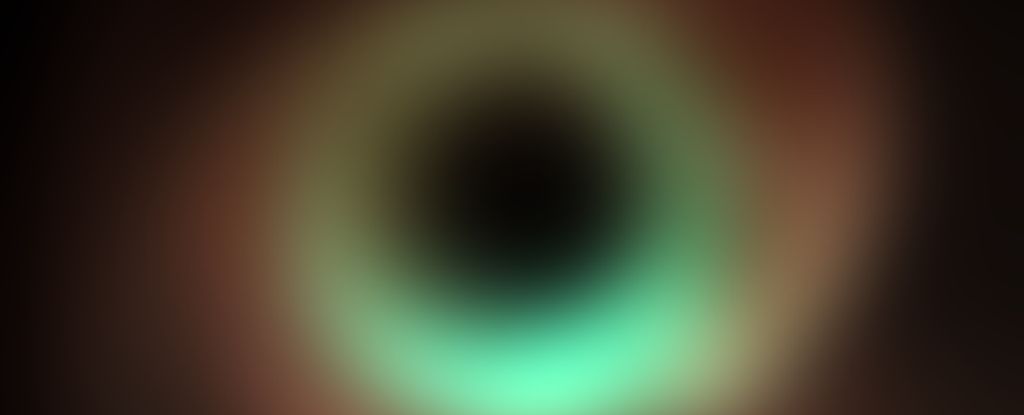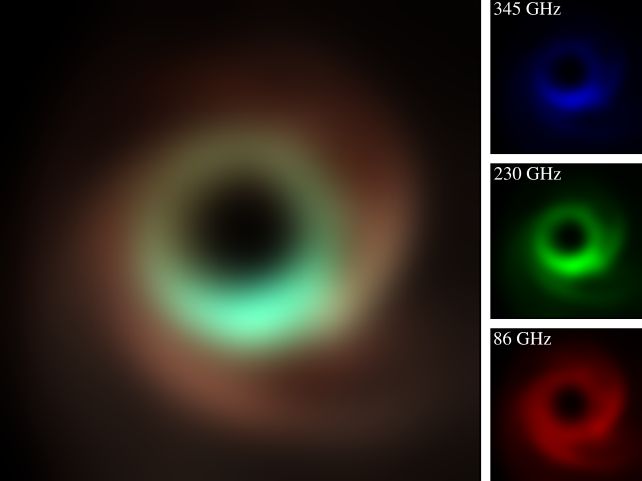
In test images of distant galaxies, a group of Event Horizon Telescopes has achieved the highest resolution ever seen in ground-based observations.
It’s an achievement that puts even more stunning images of supermassive black holes within our grasp, offering future enhancements that are 50 percent more detailed than the images obtained so far – images of M87*, a supermassive black hole 55 million light-years away, and Sagittarius A* (Sgr A*), the supermassive black hole at the center of our galaxy.
Using only a handful of telescopes that make up the Event Horizon Telescope (EHT) array, the new observations have not yielded any new images. To achieve this, the full power of the entire array is needed.
But the experiment succeeded in observing the universe with the best resolution ever achieved from the Earth’s surface, as it was able to detect far-infrared light with a relatively higher frequency of 345 gigahertz, which has a wavelength of only 0.87 millimeters.
“Using the EHT, we saw the first images of black holes using 1.3-millimeter wavelength observations, but the bright ring we saw, formed by the bending of light in the black hole’s gravity, still looked blurry because we were at the absolute limit of how sharp the images we could take.” Astrophysicist Alexander Raymond says: From NASA’s Jet Propulsion Laboratory.
“At 0.87 mm, our images will be much sharper and more detailed, which should reveal new properties, both those previously predicted and perhaps some that were not predicted.”
The images of M87* and Sgr A* are the product of a technique called very long baseline interferometry, or VLBI, which involves not one but many radio telescopes around the world, all working together in synchronous precision.
Combining so many arrays effectively results in a collection area the size of the Earth; the more telescope antennas used, the more detailed the resulting data. But with so many telescopes, there’s a lot of data—and sorting, analyzing, and processing it to produce an image of a black hole’s event horizon is a massive undertaking. Between collecting, analyzing, and processing the data, each image requires dedication, time, and labor.
However, the images themselves are still quite blurry, and there are only two ways to improve the resolution. The first is to increase the size of the telescope. This will not happen in a hurry – the Event Horizon Telescope is already the size of the Earth. The second is to observe at a higher frequency.
frameborder=”0″ allow=”accelerometer; autoplay; clipboard-write; encrypted-media; gyroscope; picture-in-picture; web-share” referrerpolicy=”strict-origin-when-cross-origin” allowfullscreen>
The latter option is more feasible, but not without challenges. For example, water vapor absorbs much more light at 0.87 mm than at 1.3 mm, resulting in much greater atmospheric darkening at this wavelength. Previous observations at 0.87 mm required the use of a space telescope, which does not have the Earth-sized collecting area of the Event Horizon Telescope.
The EHT collaboration has successfully developed a method to correct for the effects of water vapor in the atmosphere, improving the efficiency of the array and allowing observations to be taken as close as 0.87 mm from the Earth’s surface.
The new observations promise to have a resolution equivalent to observing a bottle cap on the Moon from Earth, which means we may be able to see smaller, fainter and more distant supermassive black holes.
The observations also mean that we may soon be able to see multi-colour images of the hot, churning matter swirling around these cosmic monsters, by imaging at both 1.3-millimetre and 0.87-millimetre wavelengths simultaneously.

“To understand why this is such a huge achievement, think about how much extra detail you get when you go from black-and-white to color.” Astrophysicist Shepard “Chip” Doeleman says, From the Harvard-Smithsonian Center for Astrophysics and the Smithsonian Astrophysical Observatory.
“This new ‘color vision’ allows us to separate the effects of Einstein’s gravity from the hot gas and magnetic fields that fuel black holes and launch powerful jets that stream across galactic distances.”
We’re about to learn more about black holes than we’ve ever been able to before. Watch this space – epic science is lurking at the event horizon.
The research was published in Astronomical Journal.




More Stories
Boeing May Not Be Able to Operate Starliner Before Space Station Is Destroyed
Prehistoric sea cow eaten by crocodile and shark, fossils say
UNC student to become youngest woman to cross space on Blue Origin